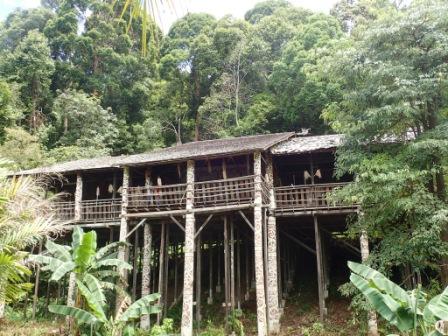 |
| James Brooke |
Ever since I first found out about
James Brooke 25 years ago through Bob’s course in Asian Studies and the book Flashman’s Lady, I have been fascinated
by the history of Sarawak. Imagine a
young British adventurer sailing into the wilds of Borneo full of head hunters
and pirates in 1839, who has the chutzpah to negotiate with the
Sultan of Brunei that in exchange for suppressing the warring tribes and
pirates in the area, who were causing the Sultan no end of angst, he would be
granted the kingdom of Sarawak. That's what happened and for over
100 years Brooke and his family ruled as the White Rajahs of Sarawak.
By all accounts Brooke was quite a
progressive ruler. He did not follow the
usual path of the colonist at the time.
He practiced a collaborative ruling style, brought a market economy,
social, civil and education services to the region while steadfastly maintaining
local customs and protecting the indigenous people from being exploited by Western
interest. His first principle of rule as
the White Rajah was that Sarawak was the heritage of the Sarawak people which
as Rajah he held in trust for them.
Today Kuching is a vibrant, modern,
multi-cultural city full of funky cafes, street art and a beautiful waterfront. Kuching means 'cat' in Malay so there are lots of cat themes throughout the city, including a cat museum which we didn't go to.
 |
| The state parliament building. A bit OTT and I wonder it is the best use of tax payers money but the locals seem proud of it. |
The head hunters are gone. The only heads now are displayed in
museums. The numerous indigenous people
such as the Dayaks, Ibans, Orang Ulu and Melanau, now live 21st
Century lives wearing blue jeans and t-shirts and having mobile phones, satellite
TV, and four wheel drive cars. Many
still live in their distinctive style of communal building, the long house, but
these houses are no longer of grass and thatch but sturdy brick and concrete
with all the mod cons. Just as the rainforest reminded us of our home in Australia (previous post), the traditional long houses reminded us of our house in Bellingen.
 |
| Heads displayed in the traditional way in an Iban house |
The tribes are known for their textiles,
bead work and wood carving. There were
lots of examples in the tourist souvenir shops and in the museums.
 |
| Bead work |
 |
| Iban mask |













No comments:
Post a Comment